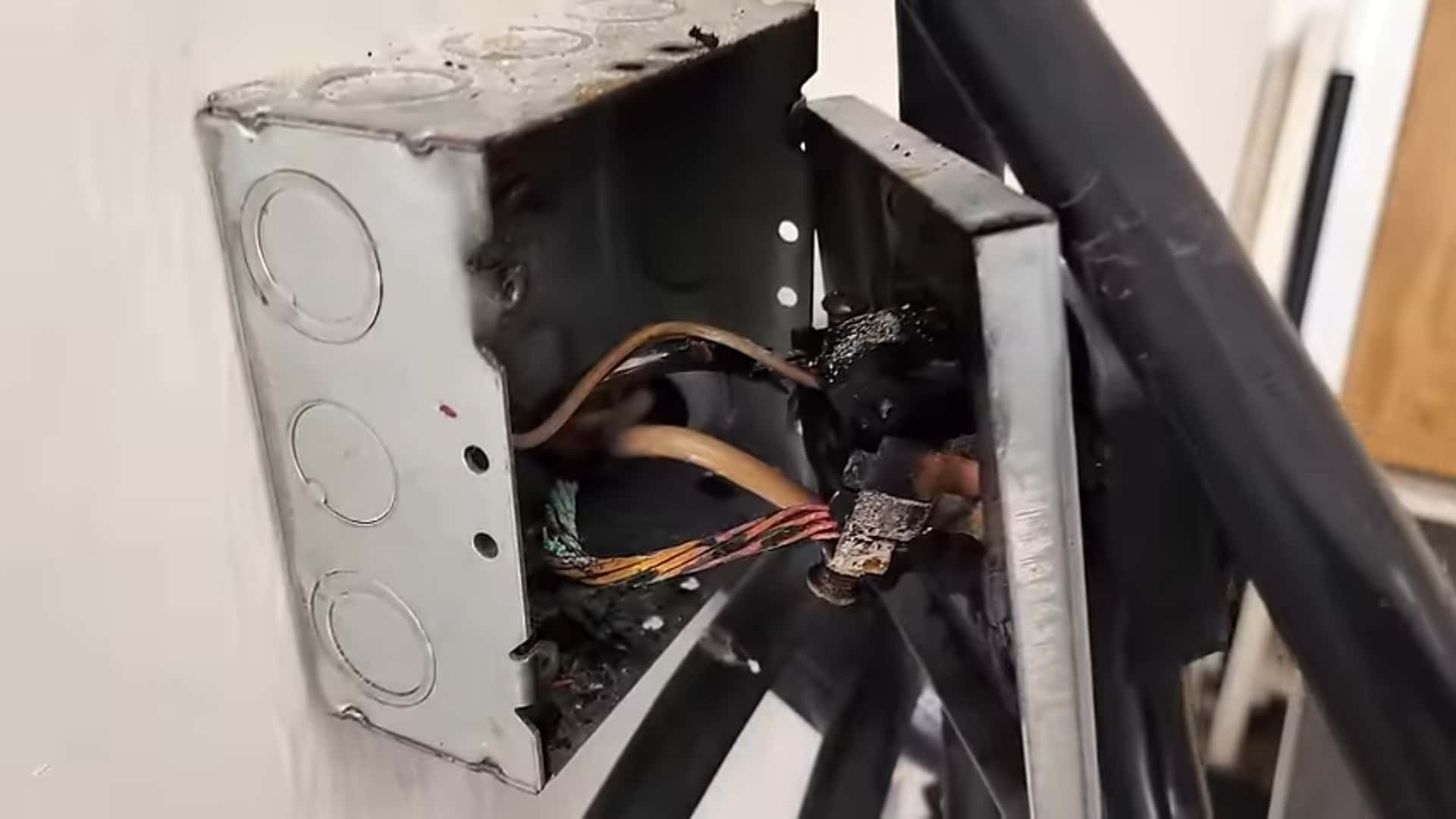
Tom Moloughney repairs a homeowner's damaged plug and explains the cause of the malfunction.
However, L2 installations, although often viewed as uncomplicated, are not entirely equal. A significant amount of electricity flows through these boxes, and if anything is not functioning properly, the potential consequences could be severe.
The YouTube channel is called Recharge Rescue. In short, he visits people who are experiencing issues with their home charging systems, explains the problem, and brings in a licensed electrician with experience in EVs to fix the issue.
Homeowner with a melted NEMA 14-50 outlet.
The video begins with a crucial piece of advice: not all outlets labeled as industrial grade can handle the demands of continuous high-power use. Moloughney draws attention to a Leviton 279-S00 plug, which usually costs around $10 and is marketed as industrial grade. He contrasts it with a newer Leviton plug designed specifically for EV charging, and the differences between them are striking. The upgraded plug is noticeably thicker and features more substantial metal components, along with improved mounting connections for the wiring on the housing.
A notable price difference exists, with a $66 difference from the lower-priced option. However, Moloughney emphasizes that the higher cost is justified by the significant improvement in quality and capabilities, effectively providing more value for the additional expense.
Upon visiting the Mach-E owner, we observed that the melted NEMA plug was a smaller, lower-quality unit. Fortunately, the owner narrowly averted a major fire, as the outlet became hot enough to fuse the charger's plug in place. The owner then had a new charger installed by Moloughney, with the assistance of a skilled electrician who completely replaced the outlet with a hard-wired setup. The breaker box was also upgraded with a 50-amp breaker; it was discovered that the previous electrician had used a 60-amp breaker and 6 gauge Romex wiring to power a 50-amp outlet. The new charger was subsequently derated to 40 amps to prevent overloading the circuit.
The upgrade proceeds without any issues, but a key takeaway from the video is to avoid cutting corners when installing a home setup. Hardwiring is generally the preferred method, but if a plug is chosen, it should be of high quality and designed to handle the increased power requirements for electric vehicle charging. Moreover, it's advisable to have a licensed electrician with experience in EV installations to handle the setup.
More On Charging:
